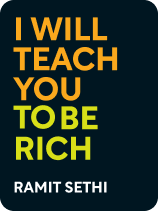

This article is an excerpt from the Shortform book guide to "I Will Teach You to Be Rich" by Ramit Sethi. Shortform has the world's best summaries and analyses of books you should be reading.
Like this article? Sign up for a free trial here .
What kind of account is a Roth IRA? What is the difference between a Roth IRA and a 401(k) retirement accounts?
A Roth IRA is an individual retirement account that allows you to deposit and grow your after-tax earnings tax-free. Unlike a 401(k), you don’t need an employer to sponsor it (and there’s no employer match option). Roth IRAs also allow you to invest however you want rather than making you choose between a few pre-selected funds like a 401(k).
In this article, we’ll explain how to start a Roth IRA so you can begin saving for retirement.
Roth IRAs vs. 401(k)
The major difference between a Roth IRA and a 401(k) is that the money you invest in your Roth IRA has already been taxed—which means that you’ll pay taxes on the money you put in, but you’ll pay no taxes on the money you earn on top of that. That gives you a huge benefit over a regular, taxable investment account, in which you pay taxes on both your contributions and your returns.
- The more you contribute to your Roth IRA, the more you capitalize on that tax benefit. For example, if you contribute $5,000 per year for 30 years (assuming an 8% annual return and 25% tax rate), you’ll earn almost $200,000 more in a Roth IRA than in a taxable investment account.
Another benefit to Roth IRAs is that it’s easier to access your money than with a 401(k): You can withdraw the money you’ve personally contributed to your Roth IRA account at any time, penalty-free. However, you’ll face penalties if you withdraw the money you’ve earned on top of that principal before the age of 59.5. There are exceptions to this rule—you won’t face penalties if you withdraw your earnings to pay for education, emergencies, buying a home, or other similar expenses. However, these exceptions are only available if your account has been open for at least five years, which is one reason why it’s so important to open your account sooner rather than later!
Contribution and Income Restrictions
There are two major restrictions on Roth IRA accounts. The first is a maximum yearly contribution, or how much you can add to the account out of your own pocket every year. The exact amount changes each year, so search “Roth IRA contribution limits” to find the current maximum.
The second restriction is a maximum income limit. To open a Roth IRA, your income can’t exceed a certain maximum limit (this number also changes every year, so search “Roth IRA income limits” to find the current numbers). If your income is below the maximum but still higher than average, you can open a Roth IRA, but the maximum yearly contribution you’re allowed to make decreases.
- If your income is too high for a Roth IRA, you can still get after-tax benefits by opening a Roth 401(k), if your employer offers one. These accounts offer the best of both worlds: the after-tax benefits of a Roth IRA (without the income restrictions), and the employer-match benefits of a traditional 401(k). Roth 401(k) accounts are a good option if you expect to be in a higher tax bracket when you retire than you are now, because the money won’t be taxed when you withdraw it like it would be with a traditional 401(k).
Choosing a Brokerage Firm
To start a Roth IRA, you’ll need an account with an investment brokerage. For now, you want to focus on discount brokerages, which offer nearly all the same features as “full service” companies (like Morgan Stanley) but with much smaller minimum investing fees, usually between $0 and $3,000. (Remember, that’s how much money you’ll need before you can actually invest the money in your account. Opening the account itself is always free.) Most brokerages will even waive those minimums if you set up automatic monthly transfers. Here are the top three discount brokerages Sethi recommends.
- Vanguard. This is the company Sethi personally uses for his investments because they offer low-cost funds to invest in. Vanguard charges a $1,000 minimum to start investing with their Roth IRAs. You won’t be able to get this one waived (even with automatic monthly contributions), so if you don’t have $1,000 to invest yet, set it as a savings goal.
- Schwab. If you opted to open a Schwab Investor Checking account back in Chapter 2, you already have a Schwab brokerage account linked to your checking account automatically. The minimum to invest in your Roth IRA through this account is $1,000, but Schwab will waive that minimum if you set up a $100 automatic monthly contribution.
- Fidelity. Fidelity is unique because they have zero minimums, so you can invest however much you like, but the fund options they offer to invest in typically have higher fees than Vanguard’s.

———End of Preview———
Like what you just read? Read the rest of the world's best book summary and analysis of Ramit Sethi's "I Will Teach You to Be Rich" at Shortform .
Here's what you'll find in our full I Will Teach You to Be Rich summary :
- The small steps you can take towards living a "rich life"
- How to choose the right bank account and manage your credit cards
- How to create a financial system that grows your money automatically






